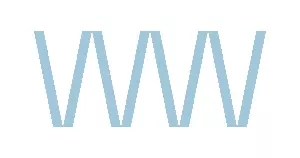In this article, Kent France, an associate of Wynn Williams & Co, gives some sound advice for the future regarding asset planning.
Anyone who is involved in business should take time to think about the way they organise their affairs so that assets built up over a lifetime are not at risk from creditors.
Asset planning should start as early as possible and be a co-ordinated effort between an experienced asset planning lawyer and the business's accountant.
Sole traders and people in partnerships are generally directly liable for liabilities arising from the business's operations. Even when trading through a company, the shareholders and directors can incur liabilities personally, such as claims for faulty work and breaches of their duty as directors. Often, too, the owners of a business will have been required to give personal guarantees of their leases or guarantees to their bankers under banking facilities, all of which can lead to personal liability. If no other asset holding structures are in place, all of the person's assets, including the family home, can be exposed.
By contrast, a good asset plan will have the following characteristics:
- business assets will be held separately from personal and family assets;
- the principal business assets will be owned separately from the business to protect them from risks arising from the operation of the business;
- the structures involved will be flexible enough to meet changing personal, business, legal and tax requirements.
In many situations a trust can be used as an effective way of holding personal or business assets and shielding them from creditors' claims. A trust arises when a trustee holds assets on behalf of a person or a group of people (called beneficiaries). The person establishing the trust can specify who the trustees and beneficiaries will be. It is usual to have more than one trustee.The group of beneficiaries may include a trustee.
A common form of trust in New Zealand is the discretionary trust. The trustees have the right to decide which of the beneficiaries will receive income and capital from the trust's assets from time to time. The beneficiaries do not have a direct ownership right to the assets held by the trustees and those assets are separate from assets owned by the beneficiaries personally.
In order to separate business assets from the business risks, the business assets can be owned by another entity and leased to the business.
The lease is a useful linking device and needs to be set up as part of the overall asset plan. It must be drawn carefully so that obligations between the structures are commercially realistic, and to allow the lease obligations to be ended if a claim is made.
In all cases the structures used to hold assets and operate a business need to be thought through in an organised manner. The way in which an asset plan is built up will depend on the type of business, the assets involved, the individual people and their family circumstances. Taxation issues always need to be considered.
Usually, when new structures are created, it is necessary to transfer assets to those structures. Because of gift duty considerations this cannot be done at once, and to avoid paying gift duty it may take many years to complete the transfer. For that reason asset planning needs to start early so that the plan is properly implemented before it is needed.
The content of this article is intended to provide a general guide to the subject matter. Specialist advice should be sought about your specific circumstances.

